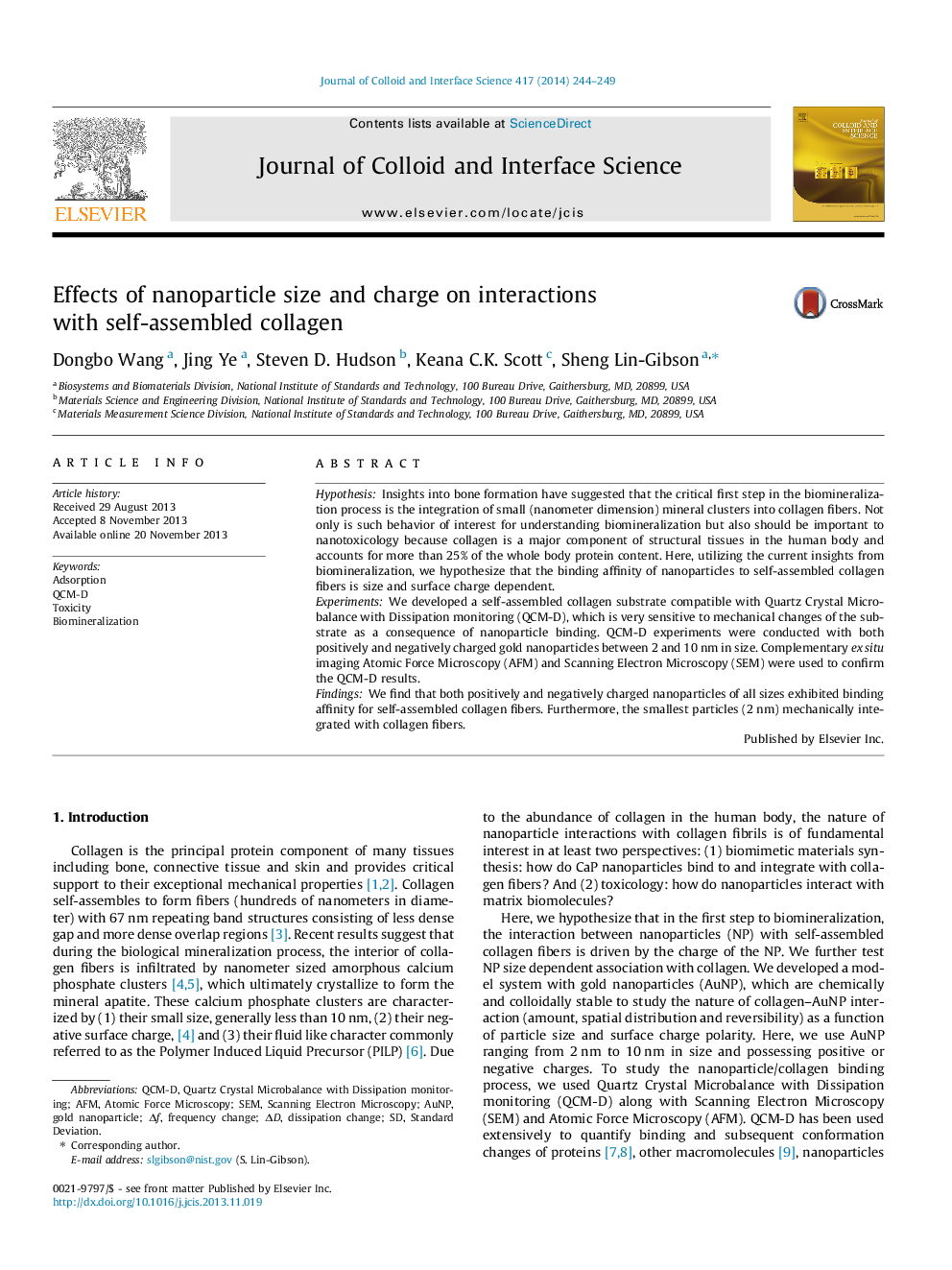| Article ID | Journal | Published Year | Pages | File Type |
|---|---|---|---|---|
| 607552 | Journal of Colloid and Interface Science | 2014 | 6 Pages |
•QCM-D to probe interaction of nanoparticles and a biomimetic collagen substrate.•All charged nanoparticles likely associate with collagen.•Association of nanoparticles with collagen is not charge polarity dependent.•Very small nanoparticles (2 nm) were found to mechanically integrate with collagen.•Larger nanoparticles particles bound to the surface of collagen.
HypothesisInsights into bone formation have suggested that the critical first step in the biomineralization process is the integration of small (nanometer dimension) mineral clusters into collagen fibers. Not only is such behavior of interest for understanding biomineralization but also should be important to nanotoxicology because collagen is a major component of structural tissues in the human body and accounts for more than 25% of the whole body protein content. Here, utilizing the current insights from biomineralization, we hypothesize that the binding affinity of nanoparticles to self-assembled collagen fibers is size and surface charge dependent.ExperimentsWe developed a self-assembled collagen substrate compatible with Quartz Crystal Microbalance with Dissipation monitoring (QCM-D), which is very sensitive to mechanical changes of the substrate as a consequence of nanoparticle binding. QCM-D experiments were conducted with both positively and negatively charged gold nanoparticles between 2 and 10 nm in size. Complementary ex situ imaging Atomic Force Microscopy (AFM) and Scanning Electron Microscopy (SEM) were used to confirm the QCM-D results.FindingsWe find that both positively and negatively charged nanoparticles of all sizes exhibited binding affinity for self-assembled collagen fibers. Furthermore, the smallest particles (2 nm) mechanically integrated with collagen fibers.
Graphical abstractFigure optionsDownload full-size imageDownload high-quality image (55 K)Download as PowerPoint slide
